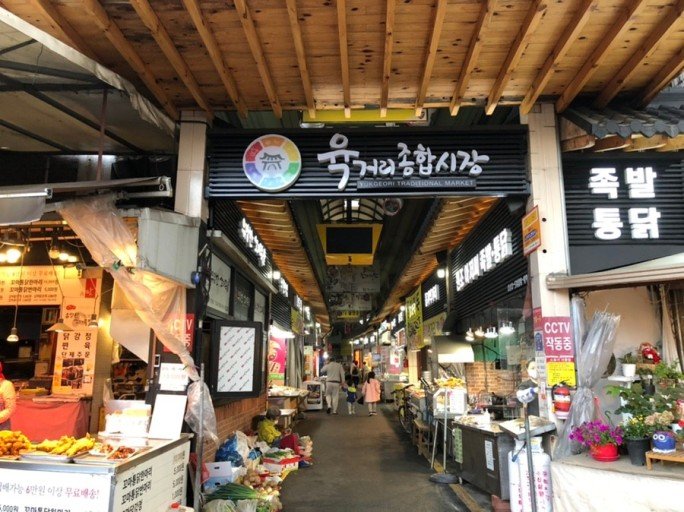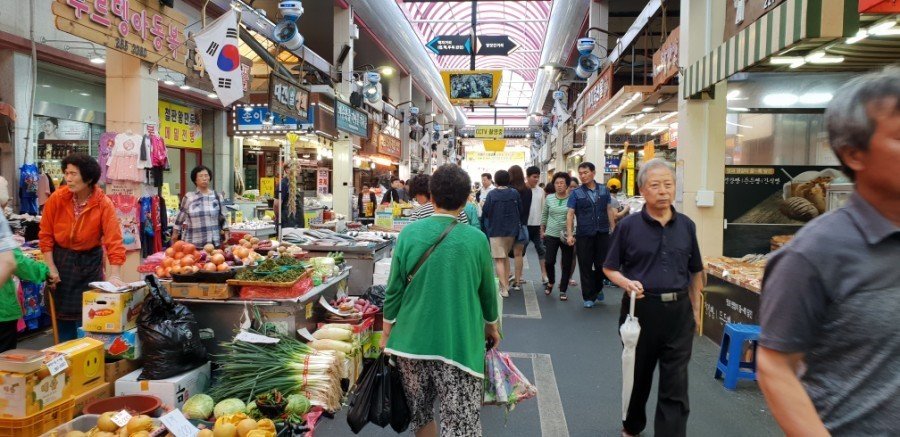사거리 단상A short thought about the intersection
어제 ‘사거리’라는 말을 학습하였다. 영어로는 ‘intersection’인데 이것만으로는 설명이 부족한 생각이 들었다. 왜냐하면 ‘사거리’는 ‘네 개의 거리’로 설명할 수 있기 때문이다.
Yesterday, we learned the word 'intersection'. It is 'intersection' in English, but I thought this alone was not enough to explain. This is because "intersection" can be explained as "four streets" in Korean.
어제 ‘사거리’라는 말을 학습하였다. 영어로는 ‘intersection’인데 이것만으로는 설명이 부족한 생각이 들었다. 왜냐하면 ‘사거리’는 ‘네 개의 거리’로 설명할 수 있기 때문이다.
Yesterday, we learned the word 'intersection'. It is 'intersection' in English, but I thought this alone was not enough to explain. This is because "intersection" can be explained as "four streets" in Korean.
위의 사진에서 보는 것 처럼 4 개의 거리를 ‘사거리’라고 칭한다. ‘사’는 숫자 4를 의미하고, ‘거리geori’는 영어로 street라 할 수 있다.
As shown in the picture above, the four streets are referred to as "intersections. 'Sa' means the number 4, and 'geori' can be called street in English.
그럼 ‘삼거리’가 있을까? 물론 있다.
Then is there "Samgeori"? Of course there is.
삼거리. 3거리
보통 ‘T’자 형태의 길을 ‘삼거리’라고 한다.
Usually, the T-shaped road is called Samgeori.
자, 그럼 다음의 거리는 뭐라고 부르면 좋을까?
What should we call the intersection that we can see in the next picture?
공덕 오거리. gongdeok ogeori.
딩동댕! 그렇다. ‘오거리’라고 하면 된다. 숫자 5와 ‘거리’라는 말을 합하면 된다.
Correct! That's right. You can say “ogeori”. The number 5 and the word 'geori' can be combined.
한국에는 육거리도 있다. 그런데 현재는 그 이름만 남고 육거리는 사라진 것 같다. ‘육거리’라는 이름을 딴 재래시장이 청주에 있다.
There is also Yukgeori in Korea. But now, only its name remains, and Yukgeori seems to have disappeared. A traditional market named Yukgeori is located in Cheongju.
사계절 the four seasons
This article is about Korea’s four seasons
Korea is located in the East Asian monsoon belt. The mean temperature of the hottest month (August) is above 25℃ (approximately 77℉). The mean temperature during winter is generally below zero. The mean temperature in January in Seoul is -3.5℃ (approximately 30℉).
The summer monsoon season, called 장마(jang-ma )'the rainy spell', brings abundant moisture from the ocean and produces heavy rainfalls. About 70 percent of Korean annual comes between June and September.
A midsummer night's cosmos. Omok-gyo, Seoul
With the arrival of spring come swallows, migratory birds from the south, and the blossoming of forsythia, azalea, and cherry blossoms. The spring rains are crucial for preparing seedbed for rice, sowing spring vegetables, and planting summer crops.
Autumn is a season of transition from the hot, humid summer weather to the cold, dry winter weather is indispensable for the rice to ripen and the farmers to harvest it.
On my way to school in Autumn. Mok-dong, Seoul
Mok-dong, Seoul











